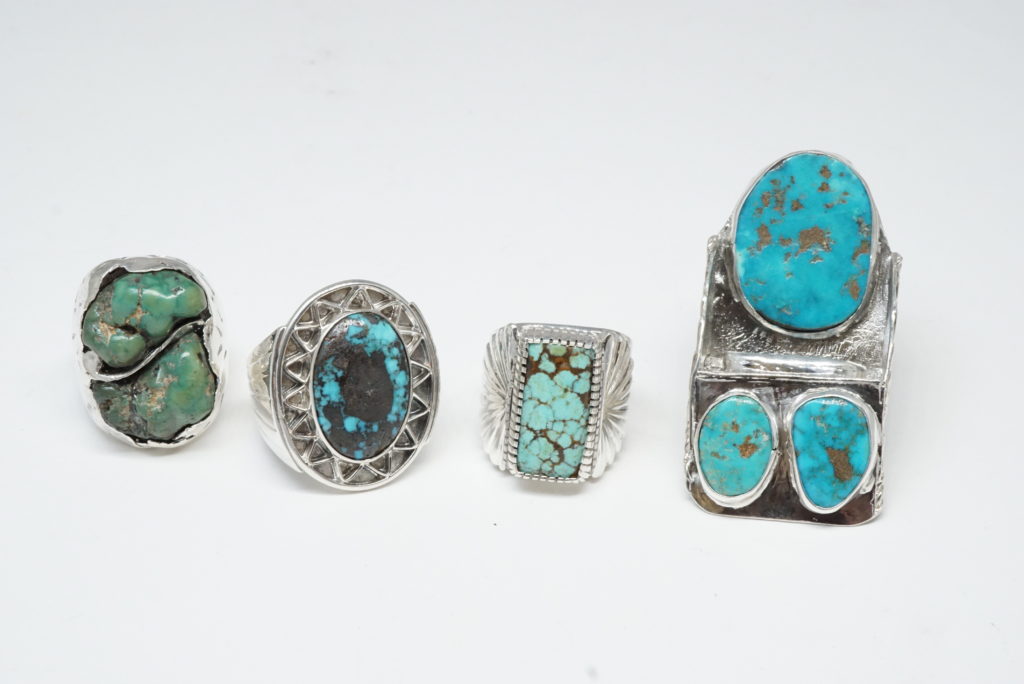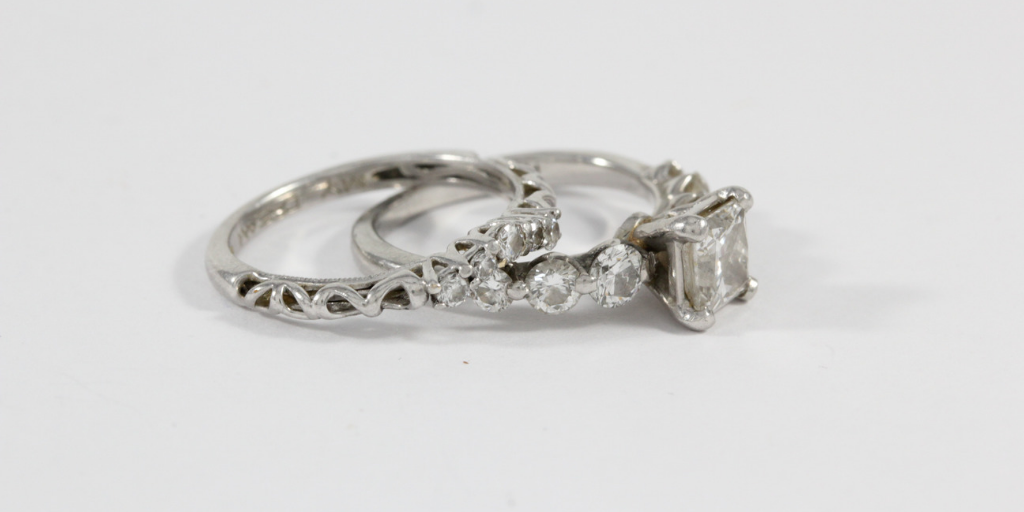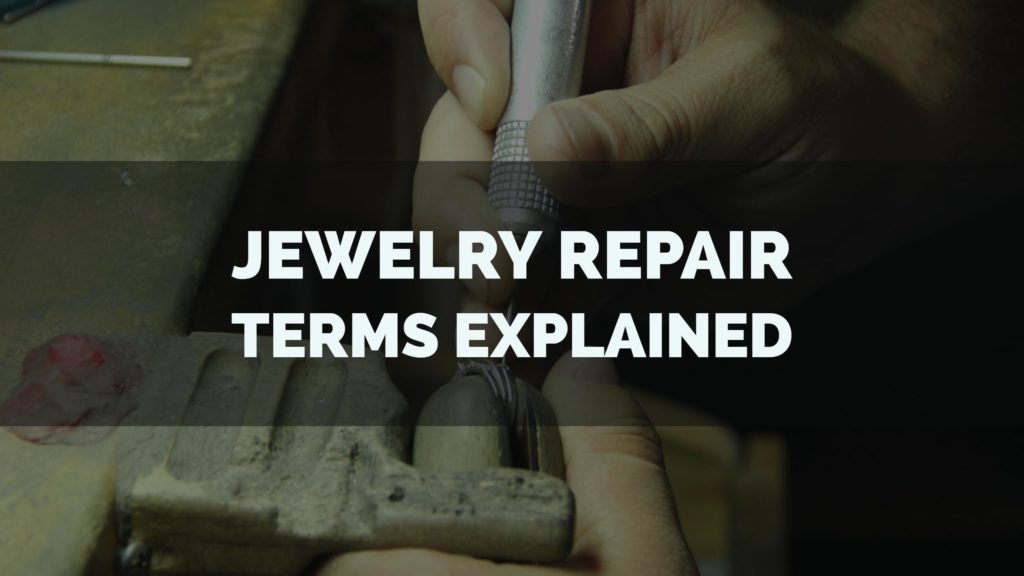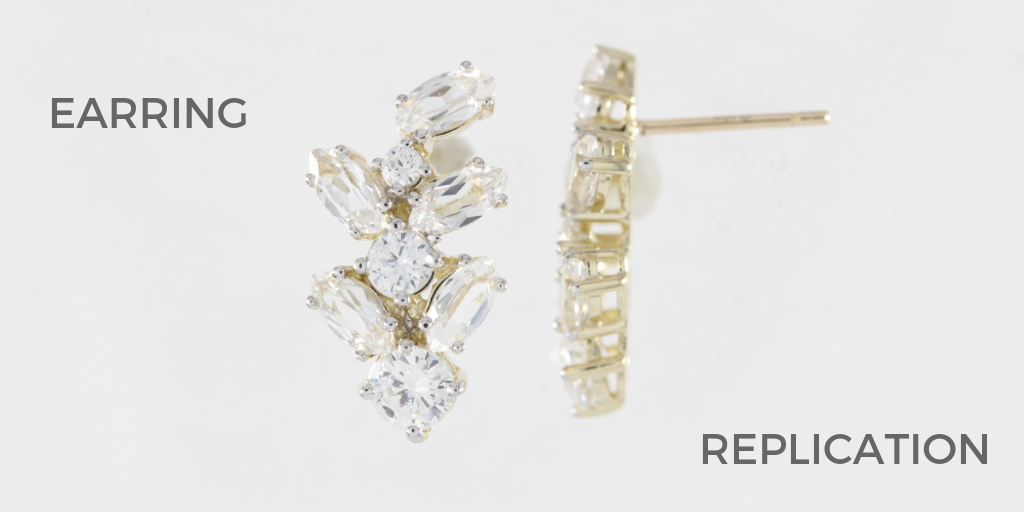How to Appraise Jewelry Yourself at Home
Written by Annabelle
August 19, 2019

You're sitting around at home, wondering what to do with some pieces of jewelry lying about. Maybe they belonged to Aunt Rachel, or you dug them out of a box at a local garage sale. No matter how you got them, you're just hoping that you might have something good.
While you might not be on the next season of Pawn Stars, here's a basic guide on how to appraise jewelry yourself at home.
1.Assess Your Jewelry
In order to determine the retail value of your jewelry, you'll need to do some detective work and examine your piece first. Depending on the condition of your item, you may want to give it a bit of a clean first in order to see any details such as metal stamps or engravings hidden under dirt and tarnish.
Line the bottom of your sink with a towel in case any stones fall out during the cleaning process. Take a toothbrush and gently scrub the piece with warm, soapy water. This is the safest way to clean jewelry at home- any household detergents or cleaners are extremely harsh and will damage your item. Once it's clean, dry it carefully and set it aside. If you can find one, get a magnifying glass or a jeweler's loupe to closely examine your jewelry. You'll want to do the following:
-
- Look for stamps: The stamps, or markings that indicate the metal content and the manufacturer or designer, are the best hint as to your jewelry's true value. On rings, they're usually inside the band. Earrings will normally have them at the back, close to the area where they are worn on your ears. Pendants and charms will either have the stamp on the back, or on the bail (the loop that allows the pendant to hang on the chain.) As for necklaces and most bracelets, look for the stamp near the clasp.

The 10k stamp is right next to the clasp on this gold necklace.
If you're lucky, you'll at least find a metal stamp. These are usually numbers; 925 for sterling silver, 316L for stainless steel, 10K, 14k, 18k for gold, and PLAT or 850 for platinum. Gold karat content will usually have a K next to the number, but some gold stamps indicate the percentage of gold content instead of measuring in karat. For example, 9 karat gold is usually stamped as 375, or 37.5% gold content, instead of 9K.Other numbers or strange markings will either be stone carat stamps (such as 0.05) or the designer's/manufacturer's logo. It can be difficult to determine who the designer or manufacturer is, as many jewelry items are made overseas and there are few regulations about jewelry trademarks.
It should be noted that costume jewelry is a special case when it comes to stamps; branded costume jewelry will have the designer's stamp, but artisanal jewelry made from base metals such as brass or copper will rarely have stamps, and definitely not metal stamps. There are no standards for stamping non-precious metals, except for gold-plated items which are often stamped with GP, HGE, GEP, or RGP.
Gold vermeil (gold over silver) is usually stamped with 925 for sterling silver, and then another number to indicate gold content.
- Test the metal: Gold reacts a certain way to specific tests, and if you have a piece that's yellow in color you'll want to try this out. In addition, gold-plated items sometimes come with no stamp, making it hard to tell whether or not they're actually plated or solid gold. You can try testing jewelry at home with the foundation or magnet trick; if it leaves a black streak on liquid foundation and doesn't react to a magnet, the chances of it being solid gold is higher.
- Examine the stones and settings: One of the most common questions we get from curious customers is “Is this a genuine diamond?” Most of the time, it probably isn't. If you've already determined that this is an item made out of base metal or sterling silver, the probability of it being a genuine diamond is considerably lower. Even a gold setting doesn't guarantee that it's an actual diamond- many pieces are set with either cubic zirconia, white sapphire, white spinel, or white topaz. The size of the stone will usually be the first clue- anything about more than 3mm wide, and you're probably holding onto a cubic zirconia. Granted, there are exceptions to this rule.
You can assess a stone by how it's cut as well. Most cubic zirconias are created to look like diamonds, so you'll usually find them in a traditional round brilliant cut. If the stone is differently cut and looks like it was hand-faceted, that's a hint that you might have something good, like a Victorian antique.
This antique ring has a rose-cut diamond, which is an old type of cut that indicates 1800s or older.
Colored stones are a toss-up- it depends on the stone, and large sizes don't necessarily mean that the stone is fake. For instance, amethyst is quite affordable, so cocktail rings with huge amethysts at 12mm or more are common.
Settings are another good way to determine if something is costume or fine jewelry. Costume jewelry stones are usually glued on, or have a flimsy looking flat prong that is commonly used to hold rhinestones. Thicker prongs with rounded tips, elaborate bezel settings, and fancier settings such as flush or tension-set indicate that you might have a higher-end piece.
- Look for stamps: The stamps, or markings that indicate the metal content and the manufacturer or designer, are the best hint as to your jewelry's true value. On rings, they're usually inside the band. Earrings will normally have them at the back, close to the area where they are worn on your ears. Pendants and charms will either have the stamp on the back, or on the bail (the loop that allows the pendant to hang on the chain.) As for necklaces and most bracelets, look for the stamp near the clasp.
2. Determine the Retail Value
When you were wondering on how to appraise jewelry at home, this definitely crossed your mind at some point- “How do I figure out how much my jewelry is worth?” Now that you've thoroughly examined and documented your pieces, it's time to sort them.
Make piles based on category: first, separate the fine jewelry from the costume jewelry. If you have multiple pieces of silver, gold, and other fine metals, put those into separate piles as well. Then proceed to evaluate them based on the following:
- Determine the age: Antiques (jewelry over a 100 years old) will sell well for their historical value. Some vintage pieces may also be considered rare enough to up the price, especially if they have some significance such as the commemoration of an event or organization. You can quickly check online to identify your antique jewelry– just be careful about revival jewelry, which are modern pieces that mimic antique designs. It should be noted that not every item is valuable just because it's old, but anything from the Edwardian era and earlier will do well on the market because of their comparative rarity.
- Check out the brand: If you have any items that are branded, you'll want to do your research. Regardless of whether it's fine or costume jewelry, branded items have value since they were created by a specific designer. For instance, vintage Chanel earrings made from brass may not be worth much in terms of materials and construction, but the branding alone may bring in several hundred dollars. A quick way to find out retail value for a branded item is to get a clear shot of your item on a white background (such as computer paper) in very good lighting. Then reverse image search on Google to find the jewelry, and see what other people are selling it for.

- Assess the condition: The condition of your items will affect retail value. Is it missing a stone? Is the gold plating coming off? The shabbier the item is, the less it'll sell for. Most costume jewelry won't be worth the headache to fix, but if you have anything branded or fine that can be touched up, you might want to invest a little bit of money and repair that before you put them up for sale.
- Calculate the metal weight price: This only applies to fine jewelry, since the metals are precious and quite literally “worth their weight.” Take the measurement that you had for the item's weight and check current prices for gold by karat content. Gold prices fluctuate, so you'll want to make sure you find a recent price for accuracy. As an example, 3 grams of gold is currently worth 58 dollars.
Find a similar item with a similar weight online, and see how much the difference is between your metal weight price and their retail price to check how much you should mark up by.
3. Sell Your Jewelry
So, now that you've fully figured out how to appraise jewelry yourself at home, there's nothing stopping you from selling off the pieces you don't want! As with figuring out the prices of your items, you want to be equally careful about how you sell your jewelry. The last thing you want is to get cheated out of a good deal, so take a look at what we recommend below:
- Sell online: This is the best way to get the price that you're asking for. No negotiations, no bargaining- you list your item and if someone likes it, they'll buy it. Ebay, Etsy, and Rubylane are good places to start, especially if the items are secondhand.
- Sell to a pawn shop or local jeweler: While this is more convenient than waiting around for someone to buy your item online, you'll have to be careful to not get swindled. Owners of these locations obviously want the best deal too, and they may try to convince you that your item is less than it's actually worth. It's worthwhile to do your research and scout out a few shops for price comparison before you actually sell to someone.
You should be set to give your jewelry a brief assessment now! It's easy to learn how to appraise jewelry yourself at home with this guide on hand, but if you want a professional appraisal check out our jewelry appraisal service for a gemologist-issued certificate!




Thank you you are very helpful
Is this worth anything ?
Hi Dawn, sadly, we cannot appraise or tell you the value of a piece through pictures. I do suggest ordering an appraisal service to know exactly how much your ring is worth. Here’s a link for that service. https://quickjewelryrepairs.com/repair/appraisal/jewelry-appraisal/
Is this worth anything
Or this
What What is this worth?
Sorry this is better
Hi, I have this old necklace that has been passed down in mu family and I am wanting to know the worth I have tested it, it is real gold however does not have a number of k on the link so I am un sure on if it is worth something.
We can definitely assist with this – we’ll need he piece in-house for assessment. I’ve followed up via email with next steps! 🙂
Can a cameo ring be appraised here?
Happy Holidays, Katie! Thank you so much for commenting on our post 🙂 I reached out via email to help you with your appraisal query